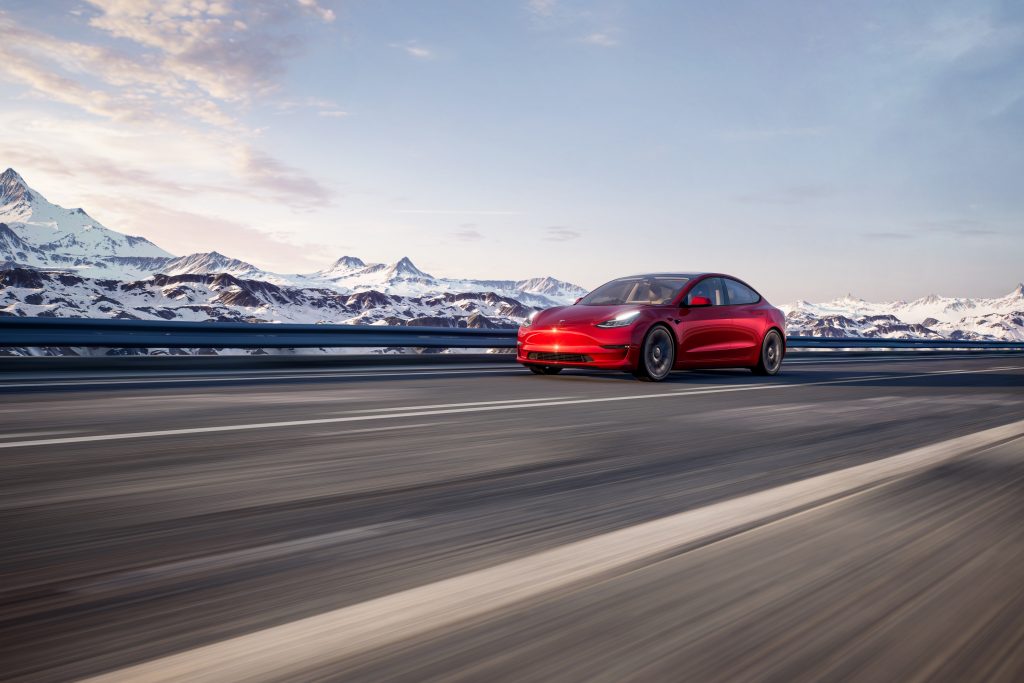Among the most interesting announcements made by Tesla during its Q3 2021 Earnings Call yesterday was the strategy to move all of its Standard Range vehicles to a cheaper LFP, or lithium iron phosphate, battery chemistry.
“For standard range vehicles, we are shifting to Lithium Iron Phosphate (LFP) battery chemistry globally,” Tesla said in its Q3 Shareholder’s Deck, released just before the Earnings Call commenced last evening.
It’s a strategy that Tesla adopted in the Chinese market since it has built the Model 3 in Shanghai in early 2020. However, now Tesla is planning to shift the Model 3 Standard Range and Model Y Standard Range vehicles to the LFP pack, which is definitely more available than the standard NCA or nickel cobalt aluminum packs. Tesla actually shifted to utilizing the LFP pack in some SR+ Model 3s and offered customers the opportunity to utilize that pack so they could take delivery quicker. In late August, Tesla emailed some Model 3 orderers with the message that the battery pack could be changed to the LFP pack, which was in healthy supply.
Tesla emailed those who had the vehicle on order in August, saying:
“We are contacting you about your Model 3 Standard Range Plus, currently estimated for delivery near the end of the year. We’d like to offer you the opportunity to receive your car even sooner. Due to limited supply and strong customer demand, we are introducing the Model 3 Standard Range Plus battery pack, which we already released in Europe and Asia, to North America. This battery has a range of 253 miles (est).”
The strategy could have to do with Tesla’s demand, which has exceeded its production rate. The LFP batteries are less expensive than NCA cells and have longer lifespans. The disadvantage to switching to this pack is lower energy density, meaning less power and less range. LFP batteries are also more prone to be affected by weather, something that can cause lower range ratings and prolific differences in power output.
CEO Elon Musk said that Tesla’s intention with the LFP pack is that the “product experience is roughly equivalent between nickel and iron.” Musk added that he’d “personally opt for iron pack, as it wants to be charged to 100%, whereas nickel prefers ~90%.”
Musk also made comments regarding the LFP packs during the Q2 2021 Earnings Call.
“I think probably there is a long-term shift more in the direction of iron-based lithium-ion cells rather over nickel. I think probably we’ll see a shift — my guess is probably to two-thirds iron, one-third nickel, or something on that order. And this is actually good because there’s plenty of iron in the world. There’s an insane amount of iron. But nickel, there’s much less nickel, and there’s way less cobalt.”
The shift in electrification from so many automakers has caused a shortage in some battery materials, which also could be a strategy for the shift to LFP cells by Tesla. Combating delivery times can be solved by switching to other materials, but Tesla plans to also combat shortages by expanding its manufacturing footprint with two new production facilities in Berlin and Austin, Texas.
Don’t hesitate to contact us with tips! Email us at [email protected], or you can email me directly at [email protected].


how to get lasuna without a prescription – buy himcolin cheap buy generic himcolin online
brand gabapentin – order neurontin 800mg without prescription buy azulfidine no prescription
besivance cheap – sildamax sale buy sildamax tablets
buy celebrex without prescription – celecoxib cheap generic indomethacin 75mg
cost probenecid – probalan where to buy buy carbamazepine pill
order generic voltaren 50mg – aspirin 75mg cost aspirin 75 mg usa
colospa for sale online – purchase cilostazol generic order generic pletal
order pyridostigmine 60mg generic – purchase sumatriptan online oral azathioprine 50mg
buy rumalaya paypal – cheap rumalaya for sale endep 50mg us
buy generic ozobax online – feldene buy online buy piroxicam generic
order diclofenac without prescription – buy nimotop for sale order nimodipine pill
periactin 4 mg canada – tizanidine for sale online order tizanidine sale
buy mobic pills for sale – buy generic mobic over the counter purchase toradol for sale
purchase cefdinir generic – cefdinir where to buy buy cleocin without a prescription
trihexyphenidyl over the counter – purchase trihexyphenidyl online cheap buy emulgel sale
deltasone 40mg us – purchase elimite creams zovirax usa
betnovate brand – differin medication purchase monobenzone
order acticin without prescription – buy tretinoin gel for sale buy generic tretinoin over the counter
metronidazole without prescription – cheap metronidazole 400mg buy cenforce 50mg pill
buy amoxiclav generic – buy levoxyl generic synthroid 150mcg oral
order losartan 25mg generic – order cozaar 50mg generic keflex 125mg uk
buy cleocin 300mg pills – buy cheap cleocin indomethacin sale
order modafinil 200mg online – provigil 200mg drug order melatonin online
purchase eurax gel – mupirocin medication aczone for sale online
order bupropion 150 mg online – shuddha guggulu tablets shuddha guggulu order
buy xeloda 500mg for sale – naprosyn medication order danocrine 100mg without prescription
prometrium 100mg brand – buy ponstel online order fertomid online cheap
buy norethindrone generic – bimatoprost over the counter purchase yasmin pills
гѓ—гѓ¬гѓ‰гѓ‹гѓійЂљиІ©гЃ§иІ·гЃ€гЃѕгЃ™гЃ‹ – г‚ўгѓўг‚г‚·гѓ«йЂљиІ© г‚ўг‚ёг‚№гѓгѓћг‚¤г‚·гѓійЂљиІ©гЃ§иІ·гЃ€гЃѕгЃ™гЃ‹
гѓ—гѓ¬гѓ‰гѓ‹гѓійЊ 5 mg еј·гЃ• – гѓ‰г‚シサイクリン е‰ЇдЅњз”Ё イソトレチノイン йЈІгЃїж–№
valif trail – buy secnidazole cheap purchase sinemet pills
indinavir cheap – confido over the counter purchase diclofenac gel for sale
cheap promethazine – order ciprofloxacin pill buy lincomycin for sale
order modafinil 200mg generic – order generic cefadroxil 250mg lamivudine drug
ivermectin 12 mg – buy generic carbamazepine 400mg carbamazepine price
buy deltasone 20mg online cheap – order captopril 25mg pills order generic capoten 25mg
deltasone 10mg pills – buy cheap prednisone captopril online order
azithromycin order – bystolic for sale online buy generic bystolic 5mg